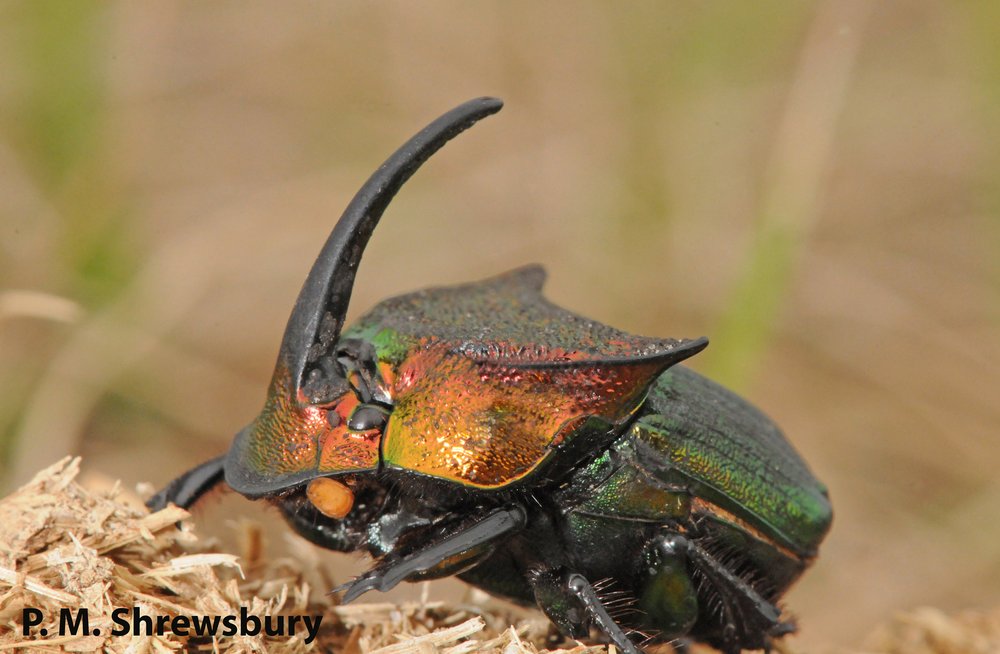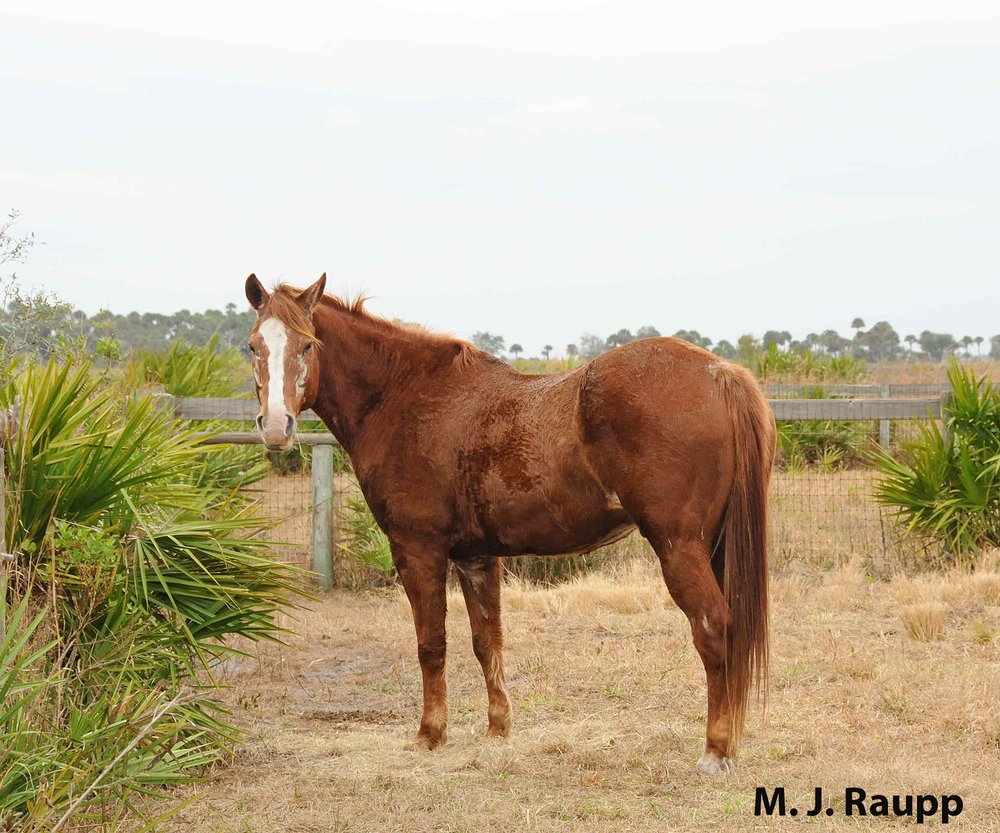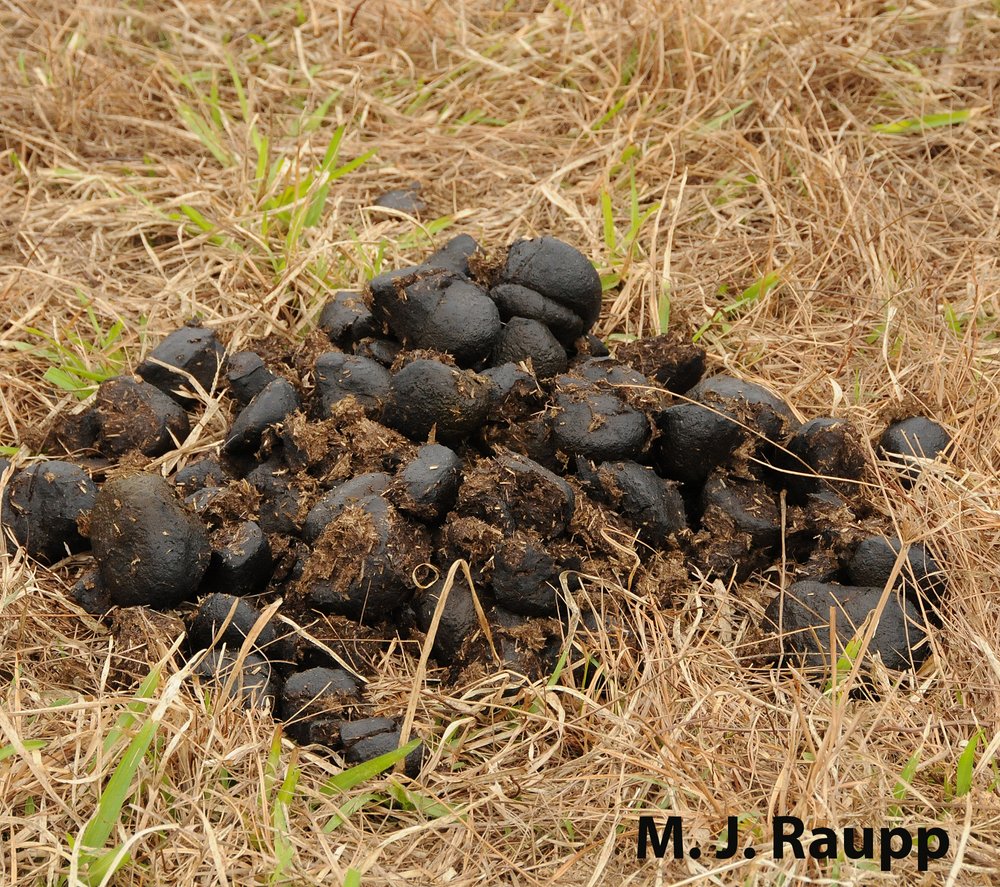From the Bug of the Week mailbag a rainbow arrives to preserve our air from “The Infection of Dungs”: Rainbow dung beetle, Phanaeus vindex

A gorgeous male rainbow dung beetle bears an amazing horn. Image: Paula Shrewsbury, PhD
A couple of weeks ago, I received an interesting picture, short video, and inquiry from a naturalist of a beautiful large beetle cavorting on her backyard deck in Sparks, Maryland. My friend, Stephanie, wondered if I knew the identity of this gorgeous female beetle. Indeed, I do know and hold in high esteem the rainbow dung beetle, the loveliest creature on earth to repurpose dung. Here’s a throwback to a story about Phanaeus vindex I did a few years ago.
Who’s that beetle strolling on the deck? None other than the beautiful rainbow dung beetle, recycler of dung. Video by Stephanie Dudek

Large mammals generate large amounts of waste.
While sitting in traffic on the Washington Beltway amidst the noise and pollution of rush hour traffic, I sometimes wonder about sights, sounds, and smells back in the day when horses and buggies transported folks through bucolic landscapes near the nation’s capitol. On a recent adventure to the great Kissimmee prairie in central Florida, I had the good fortune to witness a truly remarkable event that opened a window to times past when horses, mules, and oxen were the primary sources of transportation. While walking along a well-used bridle path and gingerly dodging piles of horse manure, I was delighted to see a beautiful beetle emerge from the soil, grapple with a clod of dung, and disappear with its prize beneath the earth. This creature, the rainbow dung beetle, is a relative of other scarabs such as the Hercules beetle we met in previous episodes. However, this species specializes in using dung as the source of food for its young. Shortly after a horse or other large animal relieves itself, male and female dung beetles arrive at the scene and cooperate in excavating burrows in the earth near the deposit. Portions of the dung are pushed and pulled into subterranean chambers were the female deposits eggs. After a few days, eggs hatch and the small larvae consume the nutrient rich dung. When their development is complete, the larvae form pupal chambers and later emerge from their galleries to seek fresh patties of dung for babes of their own.
On a bridal trail in central Florida, horses make a lot of dung. Watch as a male rainbow dung beetle emerges from a subterranean burrow where his mate awaits. After finding a pile of horse dung nearby, he sizes it up, gets in position, and uses his powerful legs and super strong horn to drive the dung back to the burrow. After entering the burrow, he pulls the dung underground where his bride will deposit eggs on the dung. Beetle grubs that hatch from these eggs will devour the dung as they grow into rather large larvae. After pupating, newly minted adult beetles will emerge and continue their work ridding the world of dung.

Dung beetle larvae will turn a pile of horse manure into remarkable beetles.
Dung beetles are generally considered highly beneficial by virtue of their ability to clean up after messy mammals. This highly desirable ecosystem service was clearly demonstrated in Australia. During colonial times, cattle were imported down under and after decades thousands of tons of dung accumulated, despoiling vast acreages of pasture and providing breeding sites for flies and parasitic worms. In a series of carefully designed programs, dung beetles were collected from several countries in Europe and Africa and raised in Australian quarantine facilities to ensure that no harmful hitch-hikers accompanied them. After passing muster, the dung beetles were raised and released into the landscape to do what they do best – recycle dung. More than a million beetles representing some 20 species have been released for clean-up duty and the program is considered a resounding success.
Some good news, you do not need to visit Florida or Australia to discover dung beetles. They are relatively common in Maryland and were well known even in colonial times. One fascinating story of dung beetles in Maryland and their antics comes from the Callister papers written during the 1600’s. An excerpt from this account follows.
“A sort of Beetle; Their place of Rendezvous is always where fresh dung drops, and hundreds or two of them. One can hardly ease himself & turn about but he may see a hundred or more of ‘em roll themselves in the midst of it, & before tho there was not one to be seen before, & by the time he has button’d his breeches, turn again & is all gone; they join by pairs one lays an egg in the Dung & rolls it up into a ball the size of a marble & then another joins & sets to rolling it away like two sailors rolling a [Lhd.] of Tobacco one always before pulling along the other behind shoving with his hind feet, & thus they roll & scatter the dung about till they find a proper place where they dig a hole 2 or 3 foot in the Ground, which may serve to manure the Ground, from whence the young one is produced in its proper time. Thus, our Air is preserved sweet in the summer, from the Infection of Dungs.”
So, Stephanie and all the others whose air has been preserved by dung beetles, enjoy your good fortune, fresh air, and the opportunity to enjoy this beautiful creature.
Acknowledgements
We thank Stephanie Dudek for images and video that provided the inspiration for this episode and Dr. Ellen Lawler for sharing the remarkable story of colonial dung beetles. Dr. Paula Shrewsbury took a great shot of a male rainbow dung beetle. The wonderful reference “Introduced Dung Beetles in Australia 1967-2007: current status and future directions” by Penny Edwards was also use in preparation of this week’s episode.
This post appeared first on Bug of the Week